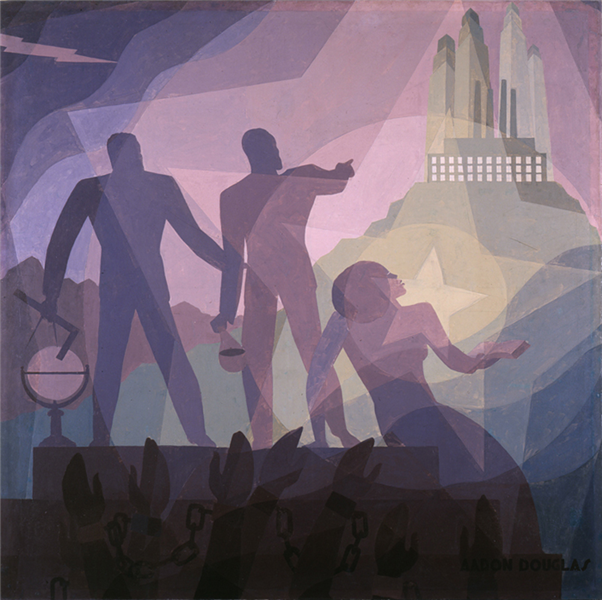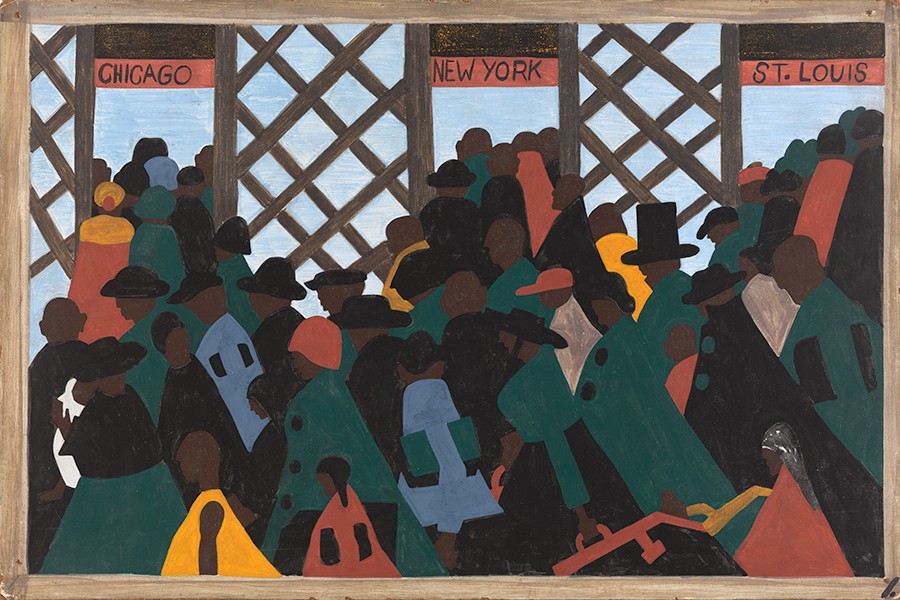Harlem Renaissance
By the mid-1920s, both white and black Americans understood that New York’s Harlem neighborhood was alive with a new, vibrant sense of cultural possibility. This new cultural climate, which came to be known as the Harlem Renaissance, had been inaugurated by the mass migration of blacks out of the South into the North after the outbreak of World War I. in 1914, nearly 90 percent of all African Americans lived in the South, three-quarters of them in the rural South. But lured by a huge demand for labor in the North once the war began and impoverished after a boll weevil infestation ruined the cotton crop, blacks flooded into the North. In the course of a mere 90 days early in the 1920s, 12,000 African Americans left Mississippi alone. Many met with great hardship, but there was wealth to be had as well, and anything seemed better than life under Jim Crow in the South. They hoped to find a new life in the urban North, the promise of which African-American artists Aaron Douglas (1898-1979) captures in his painting Aspiration.[1]

Aspiration, created for the Texas Centennial of 1936, conveys the artist’s perception of a link between African/Egyptian and African American cultures. Rejecting European claims to Egypt’s historical legacy, Aaron Douglas’ painting depicts multiple progressions – from slavery to freedom, and from the agrarian or sharecropper labor of the South to the industrial labor of the North – along with the triumph of freedom over racism and subjugation. The shackled arms rising from wave-like curves evoke the transatlantic passage of slave ships. The five-pointed stars symbolize Texas, but also recall the North Star that guided fugitives from slavery to freedom before the Civil War. The seated figure of Egypt holding a book and silhouettes of pyramids represent the cultural contributions of ancient African/Egyptian civilization. The two twentieth-century African American men hold attributes of education and gaze upward to a city whose futuristic skyscrapers symbolize human aspiration.

One of the best known artists to emerge from the Harlem Community Art Center was Jacob Lawrence (1917-2000). Lawrence devoted much of his early work to the depiction of African-American history, which he recounted in several series of narrative paintings on small panels, each accompanied by a text. In 1940-41, Lawrence created his most expansive series, entitled The Migration of the Negro, in which 60 panels chronicle the Great Migration, a journey that brought Lawrence’s own parents from South Carolina to Atlantic City, New Jersey. The first panel shows African-American migrants streaming through the doors of a Southern train station on their way to Chicago, New York, or St. Louis. Lawrence’s boldly abstracted silhouette style, with its flat bright shapes and colors, is superficially similar to Cubism, but in fact draws consciously and more directly on the African visual sources that inspired Picasso. Lawrence later illustrated books by Harlem Renaissance authors.[2]

